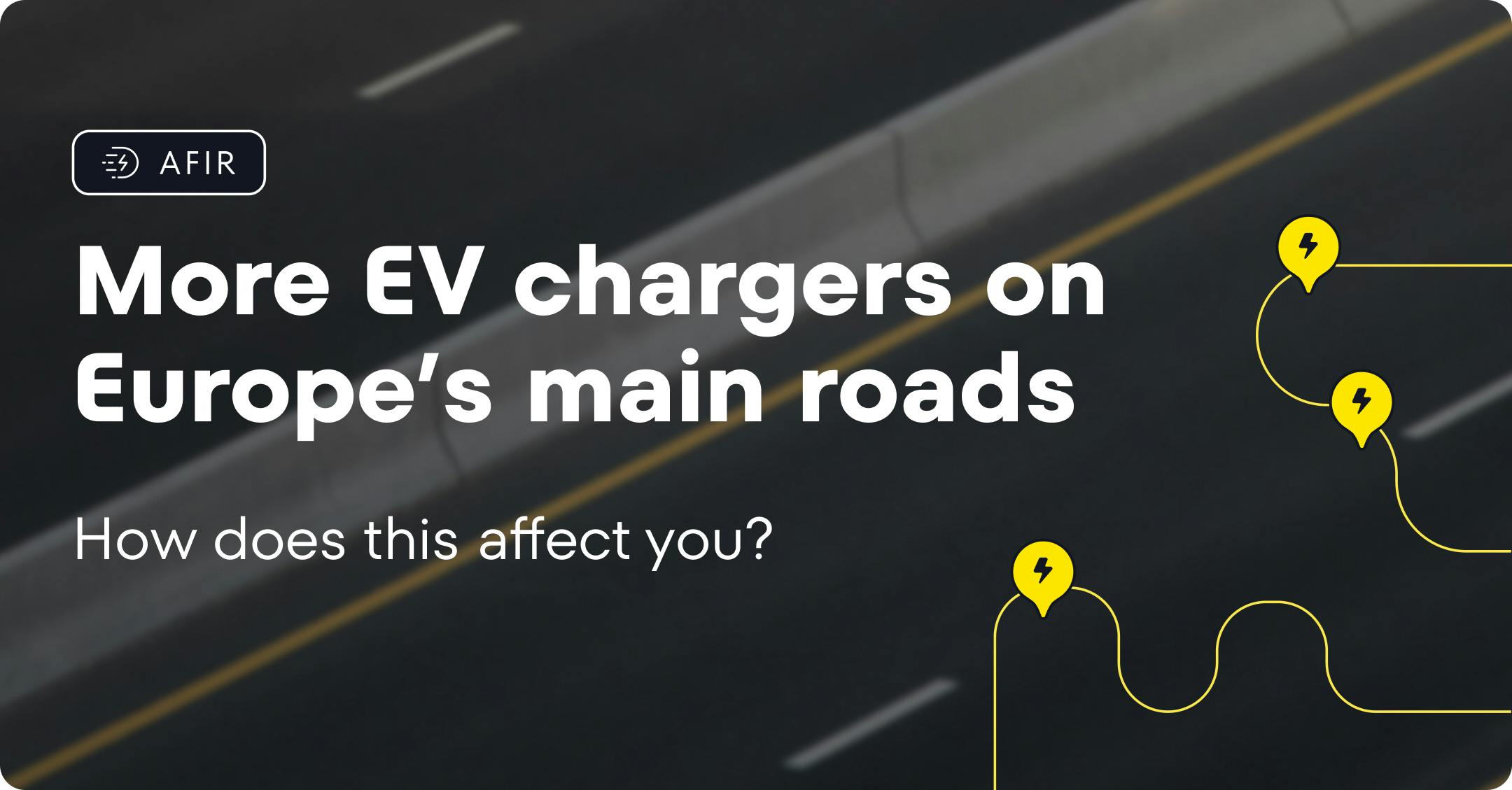
Why does the EU set charging capacity requirements?
Even though the mass adoption of electric cars is still in low gear, the catalyst for that change is just around the corner. The sales of new petrol and diesel cars in the EU will most likely end in 2035. After that, every new car sold within the single market will be electric, creating more demand for public EV charging capacity.
The infrastructure that makes the fully electric transportation of people and goods work can’t be sprung up overnight. And that’s why the Alternative Fuels Infrastructure Regulation is a game-changer for electric vehicle drivers in Europe. Among other things, it sets minimum requirements for charging capacity on highways, ensuring convenient and efficient charging on journeys across the continent.
Although the new requirements don’t apply to every stretch of the road, AFIR sets minimum charging capacity requirements on the main highways, known as the TEN-T network.

TEN-T: connecting Europe by land and sea
The Trans-European Transport Network (TEN-T) is an ambitious infrastructure project designed to connect major European cities and regions through a network of roads, railways, airports, and waterways. Its goal is to improve connectivity, promote trade, and foster economic growth across the continent.
This network consists of two main parts:
- TEN-T Core comprises nine key “core network corridors” spanning 30,000 kilometers and strategically connecting different corners of Europe. These routes, like the Baltic–Adriatic and North Sea–Mediterranean corridors, act as major arteries for freight and passenger transportation.
- TEN-T Extended expands upon the core network, covering a broader range of important European roads, railways, and ports.
The first requirements will come into effect in 2025, with more ambitious goals to follow. Next year, the TEN-T Core network must have 400 kilowatts of charging capacity in both directions for every 60 kilometers of road, with at least one 150-kilowatt charger.

While the immediate focus is on building the charging infrastructure along the core routes, the same minimum charging capacity requirements will ultimately apply to all major highways in Europe. Making all of these routes easily accessible for electric vehicles in the next decade is a significant undertaking. Its success will improve Europe’s transportation system and should also create many infrastructure jobs within the continent.
Paving the way for green transportation
So far, the EV charging industry has managed to build the much-needed public charging infrastructure by meeting the demand coming from the market. In practice, places with a lot of electric cars have received more chargers. But many of the low-hanging fruits have already been picked. Now it’s time to extend the charging network to areas where the demand isn’t so strong — at least yet.
Meeting the minimum charging capacity requirements set out in AFIR requires the public and private sectors to work together. The companies installing and operating chargers that help countries meet the AFIR goals are often eligible for funding from the EU or local government. This incentivizes them to create charging infrastructure that’s fit for 2035, even if operating it isn’t yet very profitable.
With the addition of new fast chargers, we expect road trips on Europe’s highways to become even easier. And as always, we’re making sure you can conveniently charge on your way.

